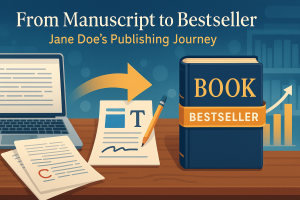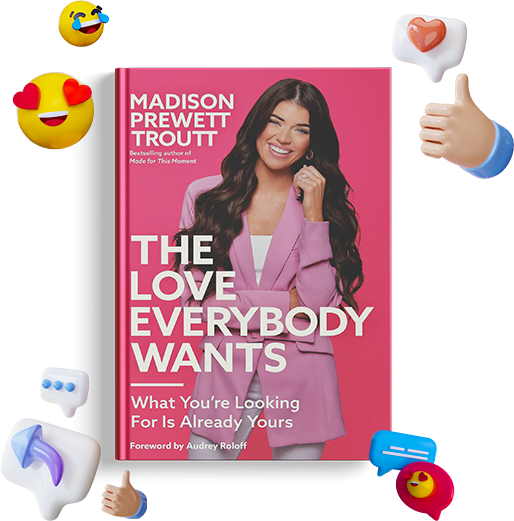Have you ever wondered how to start writing a book about your life? Perhaps you’ve experienced events so remarkable, they beg to be shared. Or maybe your personal journey is filled with lessons that could inspire others. Crafting a life story into a book—whether it’s a memoir, autobiography, or creative non-fiction—can be an incredibly fulfilling process. It’s also a chance to preserve your legacy and share your wisdom with the world. In this comprehensive guide, you’ll learn every step of the process, from organizing your memories to publishing your final manuscript. By the end, you’ll be equipped with practical strategies and a deeper understanding of how to transform your life experiences into a compelling narrative.
Understanding the Purpose of Your Life Story
Before typing your first word, it’s essential to clarify why you want to write about your life. Are you aiming to inspire others through your struggles and triumphs? Do you want to leave a family legacy for future generations? Or perhaps you see your experiences as a form of personal therapy, helping you process significant life events. Having a clear sense of purpose will guide every decision you make during the writing process—from the tone of your narrative to the stories you choose to include.
Reflecting on Your Motives
- Inspiration and Education: Some writers hope their journey will motivate or teach others.
- Personal Legacy: You might want to record family history or preserve a cultural heritage.
- Therapeutic Process: Writing can be cathartic, allowing you to come to terms with your past.
- Creative Expression: You may be an artist at heart, longing to share your life in a more literary form.
Knowing your motives also helps you manage your expectations. If your primary goal is to educate or inspire, you’ll focus on lessons learned and universal themes. If it’s a legacy piece, you’ll pay extra attention to genealogical details and intimate family stories.
Memoir vs. Autobiography vs. Other Formats
When pondering how to start writing a book about your life, you’ll likely encounter different genres. The terms “memoir” and “autobiography” are often used interchangeably, but they have distinct differences:
- Autobiography: A chronological account of your entire life, often beginning with your birth and moving forward in a linear fashion.
- Memoir: Focuses on specific themes, periods, or experiences rather than covering your entire life.
- Creative Non-Fiction: Combines factual storytelling with literary techniques, offering a more narrative-driven experience.
Choosing the right format depends on what resonates with you and your readers. An autobiography can be comprehensive, but a memoir allows you to zoom in on the most transformative chapters of your life. Alternatively, creative non-fiction can let you explore your story in a more experimental or stylized way, as long as the core events remain factual.
Preparing Your Mindset and Writing Environment
Overcoming Self-Doubt
It’s common to question whether your story is interesting enough. Remember, the uniqueness of your life is not measured by how “dramatic” it seems. Often, it’s the universal emotions—love, loss, triumph, and resilience—that captivate readers. Start with the assumption that your experiences hold intrinsic value.
Setting Up a Productive Space
- Designated Writing Area: A quiet, comfortable spot can help you focus and build a routine.
- Tools and Resources: Decide whether you’ll use a notebook, a word processor, or specialized writing software like Scrivener.
- Daily or Weekly Goals: Setting word-count targets or time-blocking sessions keeps you on track.
Emotional Preparedness
Writing about personal experiences can be emotionally taxing. Consider having a support system—friends, family, or even a therapist—to discuss any challenges that arise. The process may unearth memories and feelings you haven’t explored in years.
Gathering and Organizing Your Memories
Brainstorming Sessions
Start by jotting down key life events, milestones, and relationships that stand out. This list doesn’t have to be in chronological order. You’re simply collecting puzzle pieces that will later form the bigger picture.
Interviews and Conversations
Talk to relatives, friends, or mentors who played roles in your life. Their perspectives might add layers to your narrative or remind you of incidents you’ve forgotten. If your story involves cultural or historical contexts, researching those periods can add authenticity.
Document Examination
Letters, diaries, photos, and official records can provide crucial details and spark memories. These artifacts also help anchor your story in concrete evidence, giving it more depth.
Developing a Central Theme or Message
Even the most riveting life story benefits from a unifying theme. This could be about overcoming adversity, the search for identity, or finding love in unexpected places. A strong theme helps your narrative feel cohesive, ensuring each chapter or anecdote contributes to a larger point.
Identifying Universal Threads
- Resilience: Demonstrating how you navigated hardships can resonate with readers who face similar struggles.
- Self-Discovery: Many life stories revolve around the pursuit of understanding oneself or one’s place in the world.
- Forgiveness and Healing: Personal journeys often involve letting go of past grievances.
Think of your theme as the lens through which readers interpret your experiences. While your book might cover many events, the theme keeps your narrative from feeling scattered.
Structuring Your Narrative
Chronological vs. Thematic Approaches
- Chronological: Easiest to follow, starts at the earliest memory and moves forward in time.
- Thematic: Groups events by overarching ideas—e.g., “Relationships,” “Career Milestones,” “Health Challenges.”
- Hybrid: Combines both, perhaps following a timeline but pausing to explore significant themes in depth.
Outlining Techniques
Creating an outline can significantly streamline your writing. You might opt for a detailed, chapter-by-chapter outline or a more flexible “mind map” that shows how events interconnect. Your outline is not set in stone; it evolves as your manuscript grows.
Building Tension and Climax
Like any good story, your life narrative should have a sense of progression. Identify pivotal moments that serve as plot points—a life-altering decision, a traumatic event, or a remarkable achievement. These are your high points, shaping the emotional arc of your book.
Crafting an Engaging Writing Style
Show, Don’t Tell
Instead of simply stating facts—“I was scared”—describe the physical sensations and setting that convey fear: racing heart, shaky hands, the echo of footsteps in an empty hallway. Vivid details pull readers into your experience.
Balancing Dialogue and Description
- Dialogue: Even if reconstructed from memory, well-placed dialogue can make scenes more dynamic.
- Description: Paint a clear picture of settings, people, and emotional atmospheres.
- Inner Monologue: Sharing your internal thoughts can help readers empathize with your emotional state.
Maintaining Authenticity
Aim for a voice that feels genuine to who you are. If you’re humorous in real life, let that shine through. If you’re reflective and introspective, lean into that quality. Authenticity is the heartbeat of a compelling life story.
Balancing Honesty and Sensitivity
Respecting Other People’s Privacy
Your story inevitably involves other individuals. Decide how to handle their identities—whether to use real names or pseudonyms. Always consider the potential impact of revealing personal details on relationships.
Handling Sensitive Topics
Whether you’re discussing abuse, mental health, or controversial events, approach these topics with care. While honesty is crucial, a thoughtful tone can prevent your narrative from feeling exploitative.
Ethical Dilemmas
In some cases, telling your truth might conflict with preserving family harmony or respecting cultural norms. Weigh the potential outcomes. You might choose to omit certain details or frame them in a way that balances honesty with compassion.
Editing, Revising, and Seeking Feedback
The Value of Multiple Drafts
Your first draft is often just a blueprint. Revisions help you refine your structure, tighten your prose, and deepen emotional resonance. Expect to go through several drafts before your manuscript is ready.
Peer Review and Beta Readers
Friends, family, or writing groups can serve as initial readers. Their questions and reactions can highlight areas that need clarity or further development. Constructive criticism is a valuable asset in shaping your final work.
Professional Editing
While peer feedback is helpful, a professional editor can provide specialized expertise in memoir or autobiography. They’ll guide you on pacing, narrative flow, and overall coherence. If you plan to work with Book Publishing Services, you’ll often find editing support integrated into their offerings, ensuring your manuscript is polished and market-ready.
Deciding How Many Pages Your Life Story Should Be
One common question is, “How long should my book be?” The answer varies depending on the scope of your life events, target audience, and publishing goals. Some life stories are concise, around 40,000 words (roughly 160 pages), while others can exceed 100,000 words.
If you’re uncertain, consult guidelines on how many pages should a book be. This resource can help you find a ballpark range for your genre and audience. Keep in mind that quality trumps quantity—aim to tell your story effectively rather than padding it to reach a certain page count.
Choosing a Publishing Path
Traditional Publishing
Traditional publishers handle printing, distribution, and some aspects of marketing. However, securing a contract can be competitive. You’ll typically need a compelling query letter and, often, an agent to represent you. If you’re looking for a right publishing partner who understands the nuances of personal storytelling, researching potential publishers is crucial.
Independent Presses
Smaller presses may be more open to unique, niche, or experimental life stories. While they may not have the marketing budgets of large houses, they often offer a more personalized publishing experience.
Self-Publishing
Self-publishing grants you full control over design, pricing, and marketing. It’s an increasingly popular route, especially if you prefer creative freedom. Some authors even aim to self-publish a book and become a best-selling author by leveraging modern platforms and effective marketing strategies.
Self-Publishing vs. Traditional Publishing
To decide between self-publishing and traditional publishing, weigh factors like time, control, and potential reach:
- Control: Self-publishing allows you to oversee every aspect, from cover design to distribution. Traditional publishing often requires compromises.
- Time to Market: Self-publishing can be faster. Traditional publishing may take months or even years.
- Financial Risk and Reward: Traditional deals may offer an advance but come with lower royalty rates. Self-publishing requires upfront costs but can yield higher royalties.
If you’re curious about the pros and cons for self-publishing with amazon, it’s wise to study these details before making a final decision. Amazon’s platform can offer global reach but also involves stiff competition.
Marketing and Promoting Your Life Story
Building an Author Platform
Establishing a social media presence, author website, or blog can help you connect with potential readers. Share snippets of your journey, behind-the-scenes insights, and writing tips to build anticipation.
Networking and Events
Attending literary conferences, workshops, and book fairs can expand your network. In-person events allow you to meet other authors, industry professionals, and even potential readers.
Digital Marketing Strategies
From email newsletters to paid social media ads, the digital space offers multiple avenues for promotion. If you’re new to promotion, you can learn the basics of how to market your own book to attract the right audience. Tailor your messaging to highlight what makes your life story unique.
Understanding the Financial Landscape for Authors
Earnings and Royalties
Author earnings vary widely. Traditional publishers typically offer royalty rates between 8% and 15% for print books, while self-published authors can earn up to 70% on certain platforms. However, self-publishers shoulder more upfront costs.
If you’re curious about the broader spectrum of author income, read up on how much does professional authors make. This insight can help you set realistic financial expectations and plan your budget accordingly.
Budgeting for Self-Publishing
Costs may include cover design, editing, formatting, and marketing. If you’re considering a self-publishing route on Amazon, you’ll find that amazon self-publishing cost can vary based on the services you outsource—such as editing or marketing. Balancing quality with affordability is crucial to ensuring your book stands out in a crowded market.
Preparing for Launch and Long-Term Success
Final Proofreading and Formatting
Before you hit “publish” or submit to a traditional publisher, ensure your manuscript is thoroughly proofread. Typos and formatting errors can distract readers and undermine your credibility.
Distribution Channels
Even if you opt for self-publishing, you can explore amazon book publishing to leverage Amazon’s global marketplace. Some authors also offer digital, print-on-demand, and even audiobook versions to diversify revenue streams.
Ongoing Engagement
After your book is out, keep the momentum going. Engage with readers through Q&A sessions, social media, or follow-up blog posts. Periodically update them on any new chapters in your life that might lead to sequels or additional works.
Conclusion
How to start writing a book about your life is a question that resonates with many aspiring authors. Whether your life story is a tale of resilience, an exploration of cultural roots, or a chronicle of personal triumphs, your unique experiences have the power to inspire and enlighten. The journey from idea to published book can be challenging—requiring emotional honesty, meticulous organization, and diligent editing—but the rewards are immeasurable.
By understanding your purpose, choosing the right format (memoir, autobiography, or creative non-fiction), and diligently refining your manuscript through multiple drafts, you set the foundation for a captivating read. Balancing personal revelations with respect for others’ privacy is crucial, as is developing a cohesive theme that unites your chapters. Along the way, you’ll confront questions about structure, publishing paths, marketing strategies, and financial expectations. Whether you opt for traditional publishing, an independent press, or self-publishing, thorough research will guide your decisions.
Marketing and promotion are equally vital. Building an author platform and understanding the intricacies of digital marketing can elevate your memoir from a personal project to a widely read narrative. If you choose self-publishing, be prepared to manage costs and maintain creative control. If you pursue a traditional route, brace yourself for query letters, possible rejections, and contract negotiations. In either case, connecting with the right audience and receiving feedback from editors, beta readers, and loved ones will shape your final manuscript into its best form.
Remember, writing about your life is both an act of creation and introspection. It demands vulnerability, courage, and patience. As you venture forward, embrace the emotional journey as part of the process. Your story, told with authenticity and passion, can resonate deeply with readers who see echoes of their own lives in your words.
So go ahead—start jotting down your memories, exploring your emotional truths, and drafting the chapters that define your unique human experience. In doing so, you’ll not only preserve your legacy but also offer valuable insights that can inspire and comfort others. Your life story matters, and sharing it can be one of the most meaningful endeavors you ever undertake.









